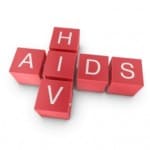
Quality Action is the EU co-funded ‘Joint Action on Improving Quality in HIV Prevention’, involving 45 partner organisations from 26 Member States, which started on 1 March 2013.
Quality Action works with Quality Assurance (QA) and Quality Improvement (QI), aiming to promote the health of the community through maximising the quality of HIV prevention projects and programmes. Using a structured approach illustrated by the Quality Action diagram (Figure 1), partner organisations engage in a continuous, ongoing effort to make improvements to the planning, implementation and evaluation of their interventions, resulting in better targeting, increased reach and stronger involvement of key populations.

The Quality Action tools provide options for applying QA/QI with different levels of resource and time investment, ambition and challenge. Quality Action participants confirm that it is crucial to start small and experience some of the more immediate benefits, such as realising what is working well already and increased team work, before embarking on a more comprehensive use of the tools.
- Succeed, for example, is an easy to use quality improvement tool based on a guided questionnaire to assess and improve structure, process and results of projects or programmes. It is a self-assessment approach to quality improvement, helping the project to meet its goals.
- Participatory Quality Development or PQD it is a more complex quality improvement tool integrating theoretical concepts, eleven practical methods and a set of case studies. Its aim is to involve stakeholders meaningfully in improving Health Promotion and HIV Prevention projects and programmes, to create practice-based evidence and to improve the effectiveness of interventions.
- QIP is a comprehensive Quality Improvement tool using an external expert review based on a self-administered documentation form. Its distinguishing features are that reviewers assess the project against a set of clearly defined quality dimensions and return a profile of quality scores as well as concrete recommendations for improvement to the user.
- PIQA is a new tool developed and tested by Quality Action. It is designed for health promotion activities targeting people who inject drugs. It is a questionnaire-based quality assurance tool using existing standards and looking at how well they are met.
- Schiff, another quality improvement tool, was developed by Quality Action as a ‘programme tool’ to help countries improve their national HIV prevention programmes by assessing critical programme-level components, including the evidence base and population needs, goal setting, planning, targeting of priority populations, key stakeholders, resources as well as monitoring and evaluation. The tool makes extensive use of data already collected by countries, including data routinely reported to ECDC and UNAIDS.

A sustained effort and the committed participation of practitioners, experts and organisations have led to these results and important achievements. Now it is crucial that we generate policy support for QA/QI in order to create an enabling environment for stakeholders to integrate QA/QI practices routinely into their projects and programmes.
This autumn, Quality Action will finalise two key documents to support this effort, its Charter for Quality in HIV Prevention and a policy kit. The policy kit will offer policy makers the rationale and concrete actions for integrating QA/QI into HIV prevention policies, strategies and action plans. The Charter for Quality in HIV Prevention summarises quality principles, criteria and key activities to put QA/QI into practice and offers practitioners, experts, policy makers and all other stakeholders the opportunity to commit to improving their work in HIV prevention based on common ground.
The Quality Action Conference ‘Doing the right things right’ on 26-27 January 2016 in Berlin is the project’s concluding event.
Registration is now open and you can join us in this excellent opportunity to take stock of the latest developments in improving quality in HIV prevention. The results and practical experience gained during Quality Action will be presented in interactive formats. Keynote speakers, HIV prevention leader Prof Kevin Fenton from Public Health England and quality improvement expert Prof Michael Wright from the Catholic University of Applied Sciences Berlin will stimulate discussion and exchange among trainers, practitioners and policy makers.


